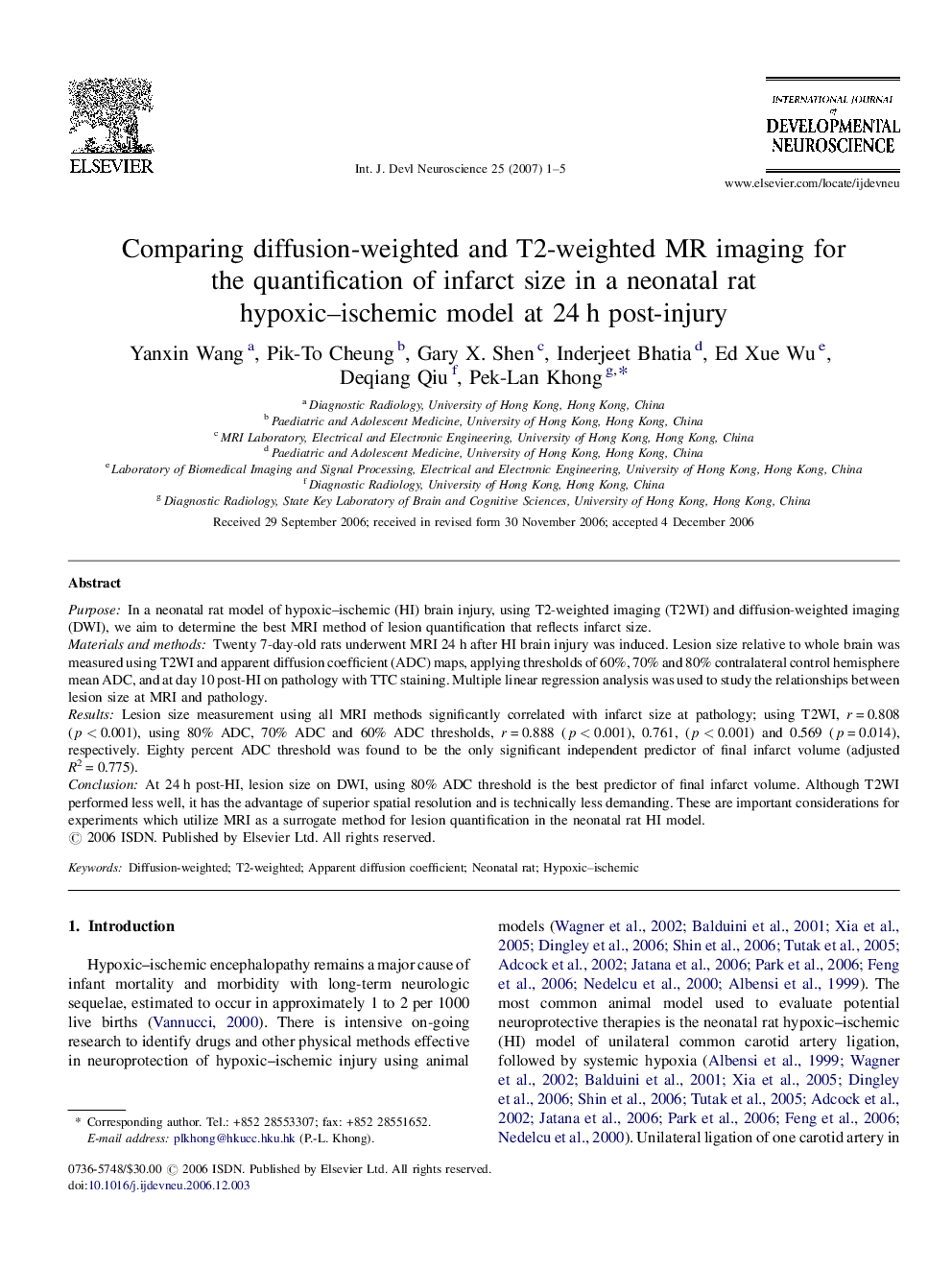| Article ID | Journal | Published Year | Pages | File Type |
|---|---|---|---|---|
| 2787184 | International Journal of Developmental Neuroscience | 2007 | 5 Pages |
PurposeIn a neonatal rat model of hypoxic–ischemic (HI) brain injury, using T2-weighted imaging (T2WI) and diffusion-weighted imaging (DWI), we aim to determine the best MRI method of lesion quantification that reflects infarct size.Materials and methodsTwenty 7-day-old rats underwent MRI 24 h after HI brain injury was induced. Lesion size relative to whole brain was measured using T2WI and apparent diffusion coefficient (ADC) maps, applying thresholds of 60%, 70% and 80% contralateral control hemisphere mean ADC, and at day 10 post-HI on pathology with TTC staining. Multiple linear regression analysis was used to study the relationships between lesion size at MRI and pathology.ResultsLesion size measurement using all MRI methods significantly correlated with infarct size at pathology; using T2WI, r = 0.808 (p < 0.001), using 80% ADC, 70% ADC and 60% ADC thresholds, r = 0.888 (p < 0.001), 0.761, (p < 0.001) and 0.569 (p = 0.014), respectively. Eighty percent ADC threshold was found to be the only significant independent predictor of final infarct volume (adjusted R2 = 0.775).ConclusionAt 24 h post-HI, lesion size on DWI, using 80% ADC threshold is the best predictor of final infarct volume. Although T2WI performed less well, it has the advantage of superior spatial resolution and is technically less demanding. These are important considerations for experiments which utilize MRI as a surrogate method for lesion quantification in the neonatal rat HI model.
